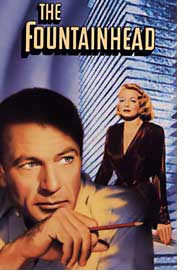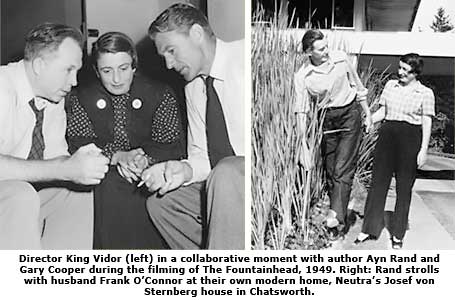Encore Performance: The Gary Cooper House - Page 3
To get more elbow room, Bohnett—who made his fortune by founding the pioneering community website GeoCities in 1994 ("I knew right from the beginning that this was going to be big," Bohnett later told the 'Wall Street Journal.' "I got an email every time someone would register. There were ten a second at one point.")—bought two adjoining homes and ripped them down.
One home was an inconsequential thing from the 1970s, Bohnett says. The other was nicer, but had been badly altered. His five-acre lot today has meandering walks, an arroyo, a half-hidden Airstream trailer, and lots of open space.
Maria Cooper Janis, who has become friends with the new owners, approves. "He's made the whole thing into a nature reserve. He's got quite a lot of respect for the character of a place," says Janis, whose husband, Byron Janis, is thea renowned classical pianist.
One of his goals, Bohnett says, was to ensure that the Cooper house remain intact. Any future owner, he says, now has enough acreage to build an immense mansion while leaving the relatively modest home alone. "I think there is plenty of other room to build," he says.
Bohnett, an art collector with pieces by Donald Judd and Ed Ruscha, among others, considers the home to be part of his collection. But he no longer lives there. Instead, he had Rios remodel a rambling Beverly Hills Colonial a short drive away.
"I like a project," Bohnett explains. "This house was a major project—acquiring the other pieces of property and integrating them together, and creating the paths. Once I was done, I was looking for another project to sink my teeth into. That's the traditional house that I'm reconstructing."

The Cooper house "provided the opportunity to do a lot of entertaining and a lot of fundraising for the causes that are important to me," says Bohnett, whose David Bohnett Foundation focuses on a range of issues, from "mass transit and non-fossil fuel transportation" and gun control to cybercenters for organizations serving gay and transgendered people. Bohnett has also been a trustee of the Los Angeles County Museum and has served on the board of the Los Angeles Philharmonic.
Moving out has not been a wrenching experience, Bohnett says. "But it would be if I sold it."
Photos: John Eng; courtesy Maria Cooper Janis and the estate of Gary Cooper, A. Quincy Jones Architecture Archive, Ayn Rand Institute, Simon Elliott, 'Town & Country' magazine
'Fountainhead' on film:
a classic or calamity?

The motion picture of 'The Fountainhead' (1949) proved to be "an architectural (and cinematic) disaster," in the words of no less a critic than Frank Lloyd Wright. For years author Ayn Rand had unsuccessfully pestered Wright to serve as her novel's acknowledged model. He refused to meet with her, though years later she did visit him at his Taliesen West studio-home.
Rand finally proceeded without Wright's help, writing him that she had borrowed not the biographical details of his life but "only the essence of what constitutes a great individualist and a great artist."
Wright did agree to design buildings for the film—but she balked when he demanded a fee of $250,000.
There is no indication that Rand ever asked famed Los Angeles modernist Richard Neutra to design for the film—even though Rand was living in one of his greatest buildings, the Josef von Sternberg house, a low-slung, streamlined masterpiece with a curved aluminum wall and a moat. Perhaps it's because Neutra, who had a strong personality but was not as flamboyant as Wright, never wore a cape.
Rand, who hovered over 'The Fountainhead' set to make sure director King Vidor changed nary a word of her script, had proposed Gary Cooper for the role of egocentric architect Howard Roark. Cooper's performance was uncharacteristically wooden—perhaps befitting the stilted dialogue. "The most asinine and inept movie that has come from Hollywood in years," the 'New York Times' wrote, reflecting critical consensus.

Yet the film retains a strong appeal—especially to fans of modern architecture, who get to see plenty of it during the film. It appeals also to fans of Gary Cooper's pectorals, for the same reason. Unrepentant Randians (until the recent economic collapse, ex-Federal Reserve chairman Alan Greenspan was one) also enjoy the film—as do fans of fruity dialogue.
But at the time, most architects did not approve. Some objected to the portrayal of its architect-hero as a criminal. Others bleated because the film suggested that all other architects were sheep.
In fact, by rejecting altruism as a virtue, and arguing that architects should focus on nothing but their own inner vision, Ayn Rand in 'The Fountainhead' contradicted one of the founding ideals of the modern movement—that a major goal of modern architecture was to improve the lives of ordinary people. That was an ideal that A. Quincy Jones never forgot.
- « first
- ‹ previous
- 1
- 2
- 3




